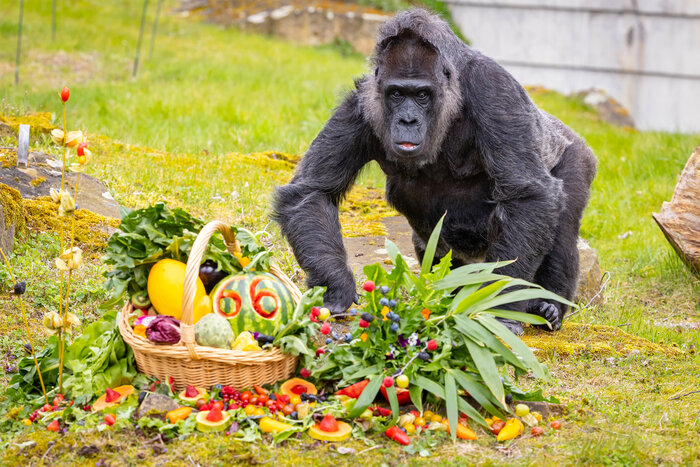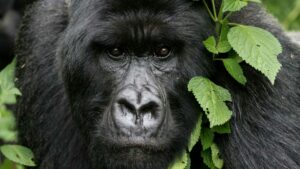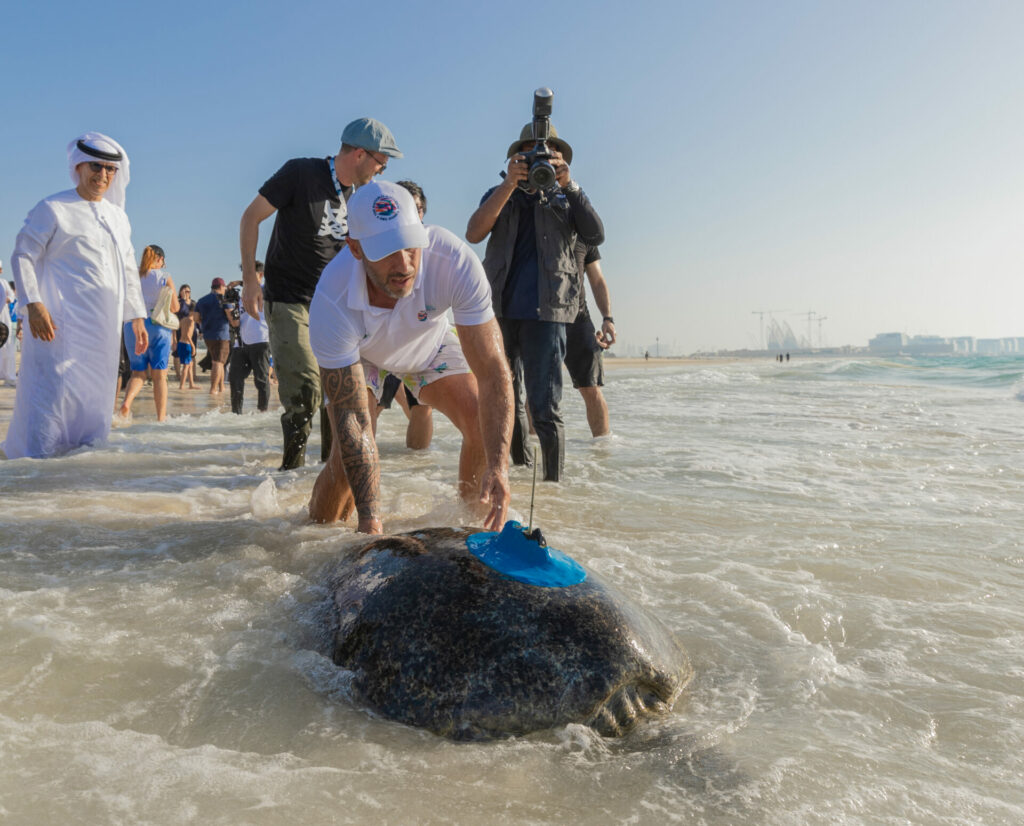Germany’s Berlin Zoo has celebrated the 66th birthday of Fatou, the world’s oldest-known living gorilla, with a special dinner that included fruit, vegetables and her age carved into a watermelon.
Fatou, a Western lowland gorilla, was once held captive by a seaman who exhibited her to pay for his bar tab in Marseille, France, before being taken in by the zoo in 1959 when she was roughly two years old.
Her keeper, Ruben Gralki, said gorillas typically live 45 to 50 years in the wild, where the species is categorised as critically endangered. In captivity an age of 60 is sometimes reached, but on very rare occasions.
In 2019, Fatou was named the ‘oldest living gorilla in captivity’ by the Guinness World Records after Trudy, a gorilla born in 1956, died.
The other gorillas at Berlin Zoo alongside the elderly lady Fatou are a silverback Sango (18) and three females Djambala (21), Bibi (26), and Mpenzi (37) and daughter Tilla (2)
Fatou has a pen to herself due to her advanced age and, although she has the opportunity to visit with the other gorillas, she usually keeps to herself.
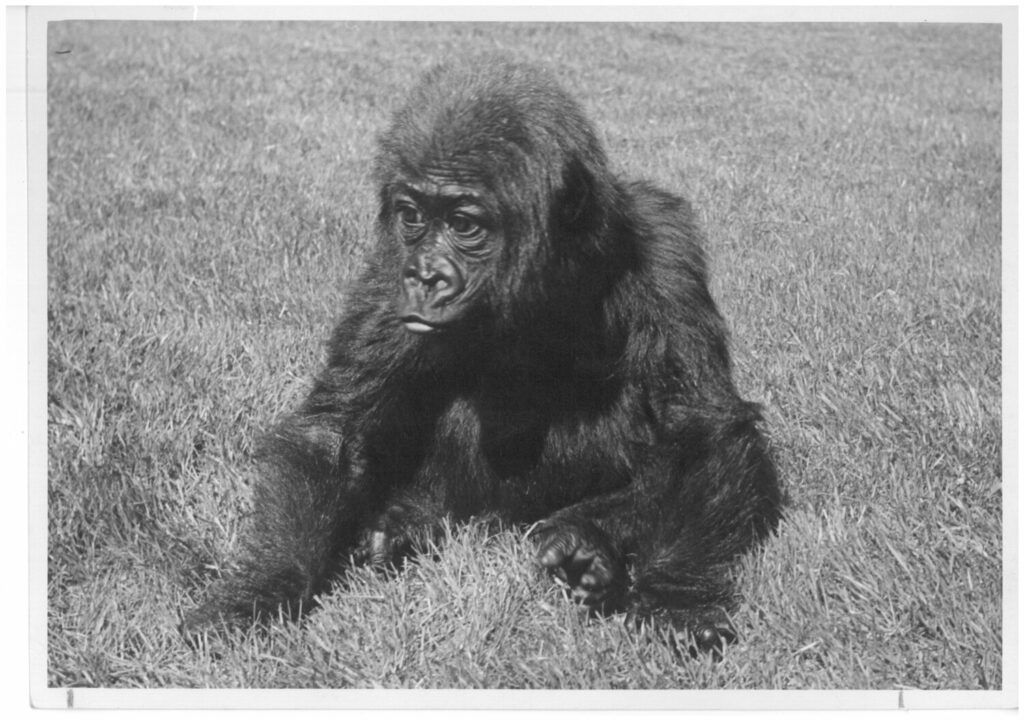
‘Fatou has the opportunity to make contact with her neighbours at any time but deliberately withdraws and keeps her distance from the group,’ he said.
The edible gifts Fatou received for her milestone birthday are a rare sugary treat for the gorilla, whose diet gets extra care at Berlin Zoo.
Her diet usually mainly consists of vegetables due to the high amount of sugar in fruits.
‘At her advanced age, Fatou needs very soft food that she can chew well even without teeth,’ said Gralki.
Through her only offspring, Dufte, Fatou is a grandmother of two, great-grandmother of 13 (six living), and great-great-grandmother of 16 (10 living)
‘As one of the oldest, Fatou is one of the few animals in the zoo that came from their natural habitat.’ explains a spokesperson for the Berlin Zoo. ‘In the meantime, almost all zoo and animal park animals were born in zoological institutions.
‘While it was still normal in the 1950s and 1960s to bring animals from their natural habitat to a zoo, today the principle of the zoo as an ark works in exactly the opposite way. In some cases, animals that were once extinct in the wild, such as bison, Przewalski’s horses and similar, can be returned to their natural habitats with the help of zoological gardens.’
Fatou’s Gorilla Status
According to the WWF the western lowland gorilla is the most numerous and widespread of all gorilla subspecies. Populations can be found in Cameroon, the Central African Republic, the Democratic Republic of Congo and Equatorial Guinea as well as Gabon and the Republic of Congo where they live in tropical rainforests that supply abundant food supplies for their vegetarian diet.
The exact number of western lowland gorillas is not known because they inhabit some of the most dense and remote rainforests in Africa, however, they are estimated to be at around 100,000.
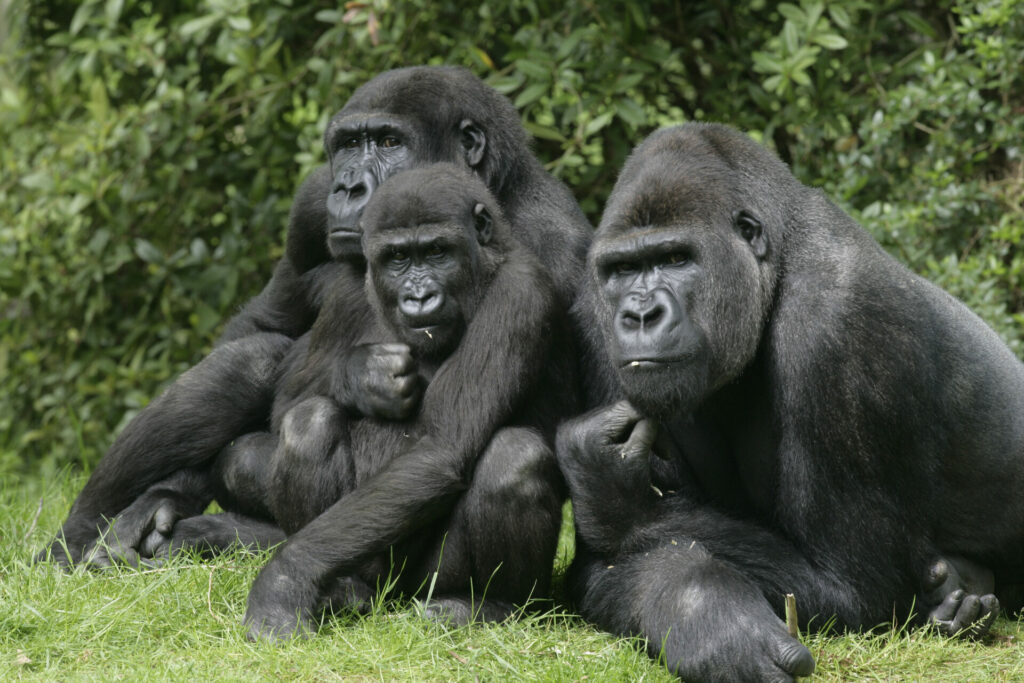
Their large numbers, however, have not protected the western lowland gorilla from decline. Due to poaching and disease, the gorilla’s numbers have declined by more than 60 per cent over the last 25 years leading the International Union for Conservation of Nature (IUCN) to classify them as critically endangered.
Forest loss is their biggest threat. It not only destroys their natural habitat but clears the way for poachers hunting for bushmeat to find them more easily. Nearly 80 per cent of western lowland gorillas live in unprotected areas that are vulnerable to poaching.
Gorilla populations have also been ravaged by infectious diseases. Experts believe that the Ebola virus may have killed as much as a third of western lowland gorillas in the early 2000s.
Scientists estimate that even if all of the threats to western lowland gorillas were to be removed, the population would still require some 75 years to recover.


